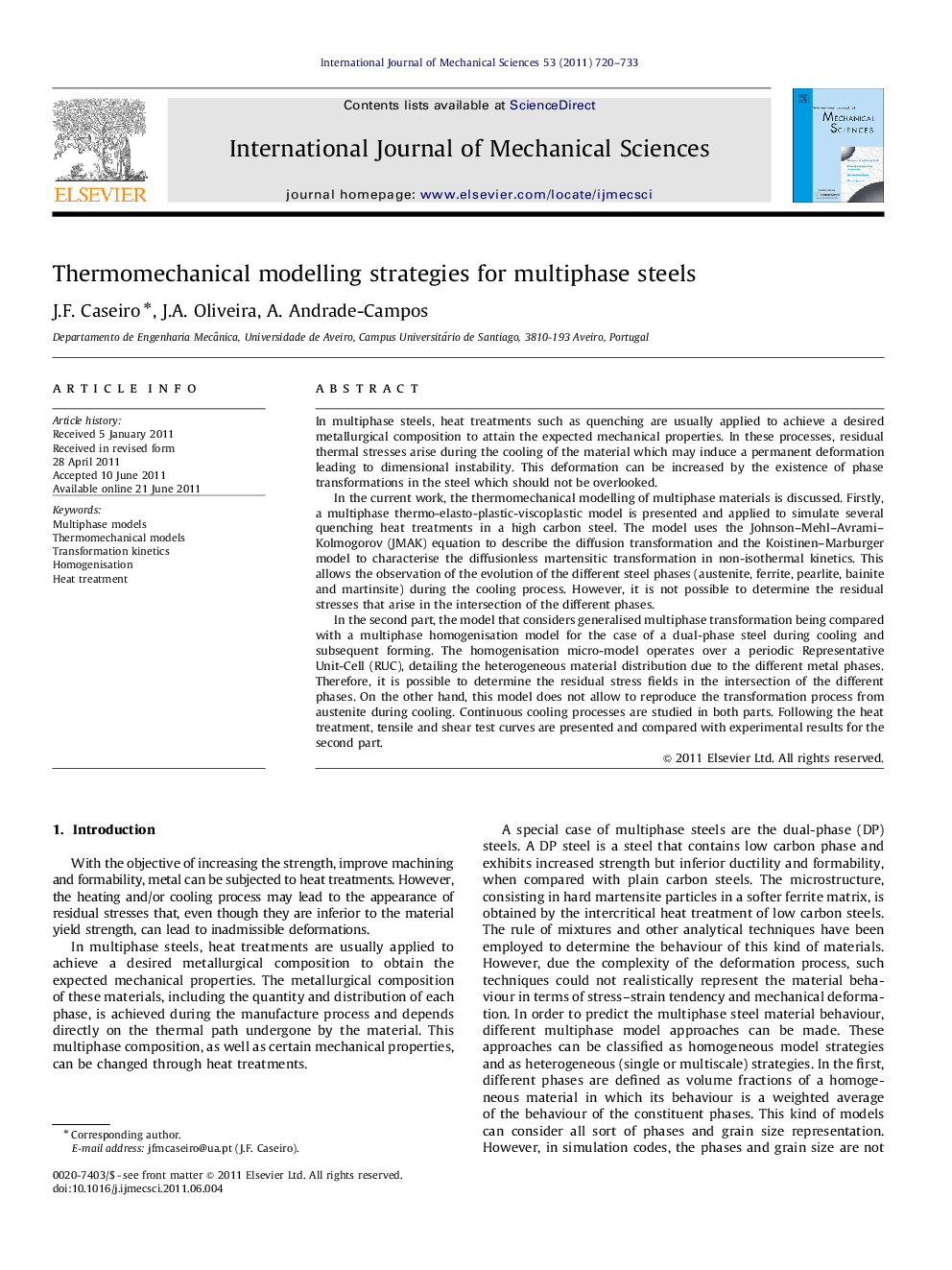| کد مقاله | کد نشریه | سال انتشار | مقاله انگلیسی | نسخه تمام متن |
|---|---|---|---|---|
| 782537 | 1465030 | 2011 | 14 صفحه PDF | دانلود رایگان |

In multiphase steels, heat treatments such as quenching are usually applied to achieve a desired metallurgical composition to attain the expected mechanical properties. In these processes, residual thermal stresses arise during the cooling of the material which may induce a permanent deformation leading to dimensional instability. This deformation can be increased by the existence of phase transformations in the steel which should not be overlooked.In the current work, the thermomechanical modelling of multiphase materials is discussed. Firstly, a multiphase thermo-elasto-plastic-viscoplastic model is presented and applied to simulate several quenching heat treatments in a high carbon steel. The model uses the Johnson–Mehl–Avrami–Kolmogorov (JMAK) equation to describe the diffusion transformation and the Koistinen–Marburger model to characterise the diffusionless martensitic transformation in non-isothermal kinetics. This allows the observation of the evolution of the different steel phases (austenite, ferrite, pearlite, bainite and martinsite) during the cooling process. However, it is not possible to determine the residual stresses that arise in the intersection of the different phases.In the second part, the model that considers generalised multiphase transformation being compared with a multiphase homogenisation model for the case of a dual-phase steel during cooling and subsequent forming. The homogenisation micro-model operates over a periodic Representative Unit-Cell (RUC), detailing the heterogeneous material distribution due to the different metal phases. Therefore, it is possible to determine the residual stress fields in the intersection of the different phases. On the other hand, this model does not allow to reproduce the transformation process from austenite during cooling. Continuous cooling processes are studied in both parts. Following the heat treatment, tensile and shear test curves are presented and compared with experimental results for the second part.
► A multiphase model is compared with a Representative Unit-Cell model.
► The models are configured to model the behaviour of multiphase steels.
► The MP models could predict more accurately the mechanical behaviour of multiphase steels.
► The RUC models under predicted the mechanical properties of multiphase steels.
► The RUC models were able to predict residual stresses in the grain intersections.
Journal: International Journal of Mechanical Sciences - Volume 53, Issue 9, September 2011, Pages 720–733